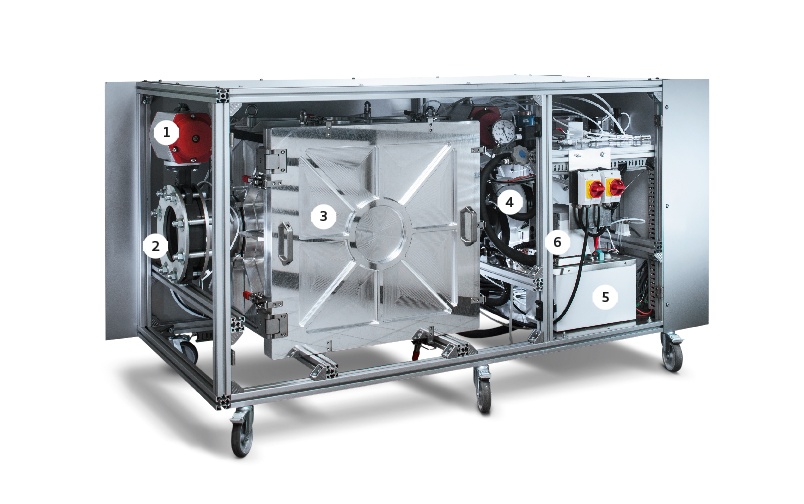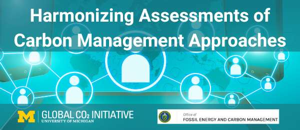Zürich, Technoparkstrasse 1, a large office building, home to more than 250 hi-tech companies and research institutes. On the second floor of the “Einstein” wing is the space occupied by Climeworks AG. A couple of rather unremarkable looking offices, a laboratory and just ten employees – a small start-up company. But it is one with a concept that could change the world of mobility, with some major input from Audi. “Climeworks has created the first manmade system in the world able to extract CO₂ continuously from the air,” explains Dr. Hagen Seifert, who is Audi’s officer for carbon footprint, future materials and renewable energies. “We reckon that this idea holds enormous potential. A year ago, we entered into an exclusive cooperation with Climeworks that we now want to expand significantly.”
The technology is extraordinarily efficient – 80 percent of the CO₂ molecules that flow through the Climeworks equipment with the ambient air are filtered out. The basic principle is astonishingly simple – the carbon dioxide is first bonded with a sorbent material, then released again and, finally, prepared for further use as a pure gas. CO₂ makes up around 0.04 percent of the air, and rising, and is distributed very evenly through the atmosphere; which is why this new technology is achieving very similar results around the world.
The principle of direct air capturing is not new, but Climeworks is the first to achieve a significant reduction in its energy requirements – with new approaches in the layout of the cellulose matrix and the chemistry of the materials. This has transformed this start-up into extremely hot property among environment companies. Established four years ago as a spin-off from the Eidgenössische Technische Hochschule (ETH) Zürich, Climeworks attracted backers from Switzerland and around the world. In the “Virgin Earth Challenge”, a climate competition sponsored by Richard Branson and Al Gore that comes with a first prize of 25 million dollars, the Zürich company was among eleven finalists selected from 10,000 entrants.
The Climeworks Demonstration Unit
At the heart of the demonstration unit is the adsorption chamber. This is where the CO₂ settles on cellulose granules coated with certain amine groups. The cellulose matrix presents a large surface area to the air flowing through it, while restricting its flow only slightly. After around three hours of operation, desorption takes place at about 95 degrees Celsius and reduced pressure. The CO₂ molecules are released from the cellulose and collected by a vacuum pump. The next cycle can then begin.
 Compact and powerful
Compact and powerful
- Valve
- Air intake blowers
- Adsorption chamber
- Air evacuation blowers
- Heating
- Heating control unit
The demonstration unit that the Swiss company has been operating since the start of 2013 marks an increase in scale to the magnitude of 1,000 compared with the previous lab unit. Its task is to demonstrate the efficiency of the Climeworks technology. It has been running continuously and soundly for the last twelve months at temperatures ranging from minus five to plus 35 degrees Celsius, with a quiet swooshing noise like that of a conventional airconditioning system. A single operating cycle takes around six hours, with the end result being one kilogram of CO₂ with a purity of 99.5 percent. The cellulose material in the adsorption chamber is changed after four years of operation; otherwise, the maintenance requirements are minimal.
But what happens to the extracted CO₂? “Carbon dioxide is not a pollutant, but a resource,” says Dr. Hagen Seifert. “Plant nurseries can use it, as can drinks companies, or soon perhaps even car companies for the air conditioning systems in their vehicles. And we at Audi have a very particular interest in this – we can make excellent use of it at our e-gas facility in Werlte.”
The plant in Emsland produces synthetic methane (Audi e-gas), which serves as fuel for cars like the A3 Sportback g-tron. The hydrogen necessary for this is extracted from water via electrolysis using eco-electricity. CO₂, the second raw material, currently comes from a neighboring biogas facility; 2.7 kilograms are required to make one kilogram of e-gas. In future, Audi could generate the CO₂ itself. “With one large Climeworks facility, we would be able to cover the current CO₂ demand in Werlte,” reckons Seifert. “This would enable us to make around 1,500 cars CO₂-free.”
A process that cleans the air and is also an important element in the manufacture of synthetic fuels – “the Climeworks technology unites two great benefits,” says Dr. Hagen Seifert. “For us at Audi, this can become a central element on the path to CO₂-neutral mobility.”
Dr. Seifert: What we find so compelling about the Climeworks technology is the closed circuit. The CO₂ available on the market today is fossil based, generated from the combustion of fossil fuels. CO₂ extracted from the air, on the other hand, is renewable – similar to a biofuel, derived from plants that extracted carbon dioxide from the air during their growth. Just that the Climeworks extraction cuts out the middle man.
Wurzbacher: We are utterly convinced by our process and its energy efficiency. In the short term, you can, of course, also capture CO₂ at the chimney of a coal-fired power station, where the concentration is naturally far higher. However, the energy required would significantly reduce the efficiency of the power station. There is no closed circuit independent of fossil fuels…
Gebald: … and besides, you would then have to transport the CO₂ to where you need it. Our technology, on the other hand, has the major benefit of freedom of choice in its location. Above all, we can position our equipment wherever there is the waste heat necessary for its operation. We firmly believe that we can offer renewable CO₂ at market prices.
Dr. Seifert: With a large Climeworks facility in Werlte, we could significantly increase the overall efficiency of our Audi e-gas facility. The heat that we need for desorption comes for free from the available waste process heat. Thinking on a large scale, we wouldn’t be able to operate without this new technology, because there wouldn’t be enough biogas facilities in Germany to generate synthetic fuel. Audi e-gas and our other efuels are also suitable for further processing – in future, they could be used to produce sustainably generated plastic parts, which could be of great interest to us. We see atmospheric CO₂ as a critical factor in this completely loss-free cradle-to-cradle cycle.
More Information
at http://audi-encounter.com/magazine/technology/01-2014/104-aus-der-luft-gegriffen
Source
Audi Encounter, press release, 2014-01.
Supplier
Audi AG
Climeworks AG
Eidgenössische Technische Hochschule Zürich (ETH Zürich)
Share
Renewable Carbon News – Daily Newsletter
Subscribe to our daily email newsletter – the world's leading newsletter on renewable materials and chemicals









